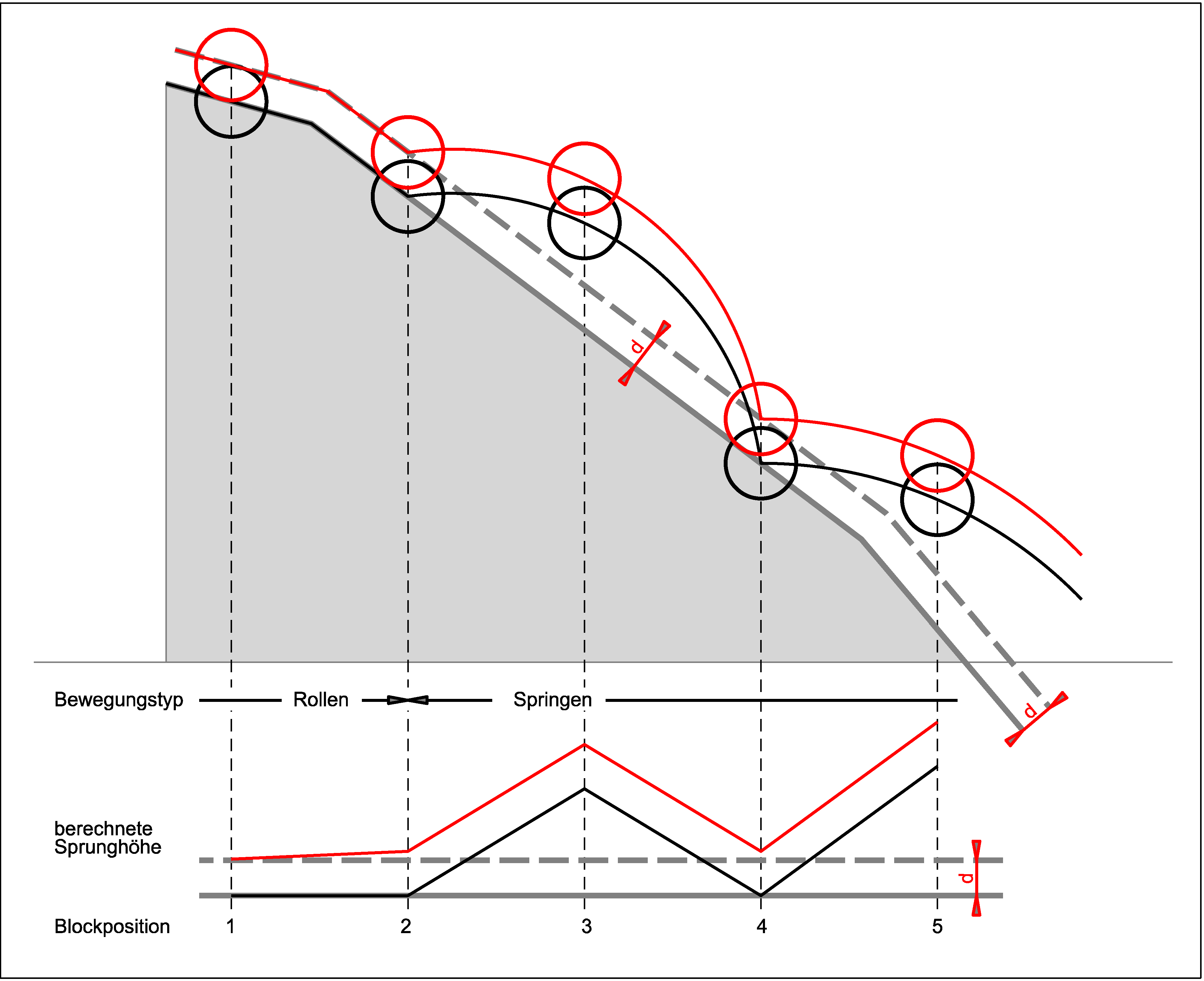Consider block axes
The option 'consider block axes' is crucial for the calculation of the bounce heights in ROFMOD:
A) Option OFF:
This means that the block axes are not considered. For the contact reactions of a fall block with the ground ROFMOD calculates with the contacts of the block center of gravity with the original terrain profile. However, because the fall block cannot normally penetrate half a block axis into the underground, the modelled bounce heights are too low and must be adapted for the dimensioning of protective measures: Half a block axis must be added to the bounce height in order to obtain the effective height of the block centre of gravity above the terrain profile.
As an advantage of this variant it can be mentioned that the representation of the associated trajectories, which hit the terrain profile directly, is intuitively understandable and easy to read.
B) Option ON:
The block axes are taken into account. For the contact reactions of a fall block with the underground ROFMOD calculates with the contacts of the block center of gravity with a virtual terrain profile. This is generated by ROFMOD at a distance d parallel to the original profile (d = half of the mean value of the larger two block half-axes). The modelled bounce heights are therefore calculated correctly and show the bounce heights of the block center of gravity above the original terrain profile (see figure below).
If the corresponding trajectories are displayed, the impact points of the block centers of gravity on the terrain are always at distance d above the original profile. For customers who do not know ROFMOD in detail, this representation is at best somewhat unusual and can therefore generate additional interpretation requirements.
It should be noted that ROFMOD always calculates the bounce height vertically, not perpendicular to the terrain surface. This must be taken into account when dimensioning a safety net.
It is recommended to model with variant B) if relatively large fall blocks are defined and at the same time a terrain profile with relatively narrow trench structures transverse to the slope and/or with protective dams (above all with a narrow drop bottom on the mountain side) is present.
For this situation the virtual profile can deviate locally strongly from the character of the original profile and lead to more realistic ranges of the fall blocks.
It is absolutely necessary to model with variant B) if there is a dam definition for which the safety against failure is to be modelled. ROFMOD does not calculate protective dam statistics when modelling with variant A).

Figure: Virtual profile at distance d above the terrain profile (dashed line).
Modeling with consideration of the block axes: trajectories and calculated bounce heights (red lines).
Translation german-english:
Bewegungstyp: Movement type
Rollen: rolling
Springen: jumping
berechnete Sprunghöhe: calculated bounce height
Blockposition: block position
Copyright © 2017-2023 GEOTEST AG